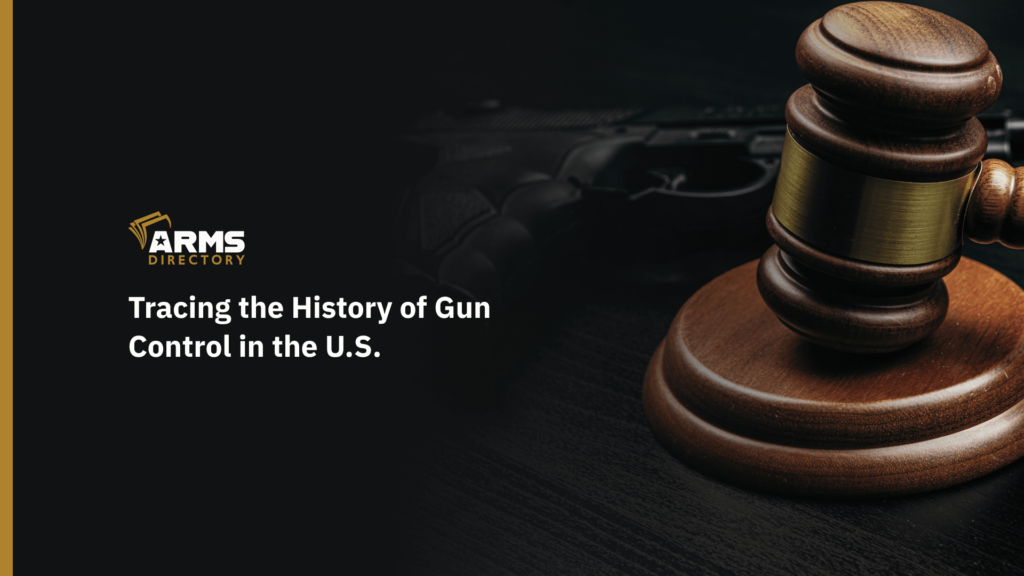![What Is a Pistol Brace [History, Regulations, Developments]](https://vault.armsdirectory.com/wp-content/uploads/2023/12/22022014/What-Is-a-Pistol-Brace_-History-Regulations-Developments-1024x576.png)
What Is a Pistol Brace? [History, Regulations, Developments]
If you are a gun enthusiast, you may have come across the term “pistol brace” recently. But what exactly is this shooting accessory that everyone is talking about? Simply put, it’s an additional stabilizer that attaches to the back of your pistol grip, designed to improve control. However, there’s a lot more here to unpack.
Where did these pistol braces come from? Do they change your gun into a type of unauthorized rifle-pistol hybrid? Or are they simply pieces that improve the overall stability of your gun?
Whether you’re already a pistol brace fanboy (or girl), or just a pistol-curious aficionado wanting to learn more, it’s time to strap in and settle this pistol brace confusion once and for all.
What Is a Pistol Brace?
Before we start, let’s review the history of rifles. In 1934, Congress passed the National Firearms Act (NFA), which set the definition of a rifle as a weapon fired from the shoulder with a barrel length of 16 inches or more. If the barrel length is under 16 inches or an overall length under 26 inches, it is classified as a short-barrel rifle (SRB). Handguns were categorized as firearms with a short stock designed for single-handed use, but there were no specific regulations regarding their barrel length. These classifications remain in effect today.
Fast forward to 2012, Alex Bosco helped a disabled veteran friend to stabilize his handgun firing by inventing the pistol stabilizing brace or arm brace. That year, he submitted the invention to the Bureau of Alcohol, Tobacco, Firearms and Explosives (ATF) for review, and they approved its use with pistols and other firearms. Following this, Bosco co-founded SB Tactical, a company leading the development of these stabilizing braces, initially concentrating on their use for those with disabilities.
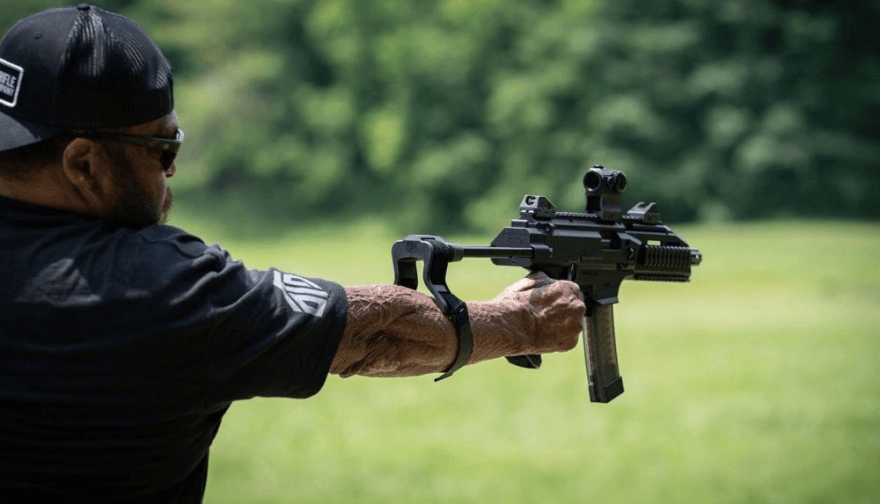
Here are some key points about pistol braces:
- Purpose and Functionality:
- A pistol brace helps stabilize AR-style pistols, enhancing their control during shooting.
- Unlike buttstocks, which would classify the firearm as a short-barreled rifle, pistol braces are designed to be attached to the forearm.
- Most braces use Velcro straps to secure them to the user’s arm.
- When used properly, they allow shooters to operate larger-profile or heavier pistols with a single arm, increasing safety and utility.
- Benefits for Shooters with Disabilities:
- Pistol braces are invaluable tools for individuals with physical impairments.
- These braces enable individuals to exercise their Second Amendment rights despite limitations.
As the brace provides a more comfortable and accurate firing experience, word spread, and pistol braces started becoming popular among shooters. Multiple companies started designing various stabilizing braces for both AR and non-AR pistols.
Consequently, concerns have arisen that, due to the nature of the product, it can be used as a stock to shoulder an AR pistol, effectively transforming the weapon from a pistol to a rifle – contrary to its original intended design and purpose.
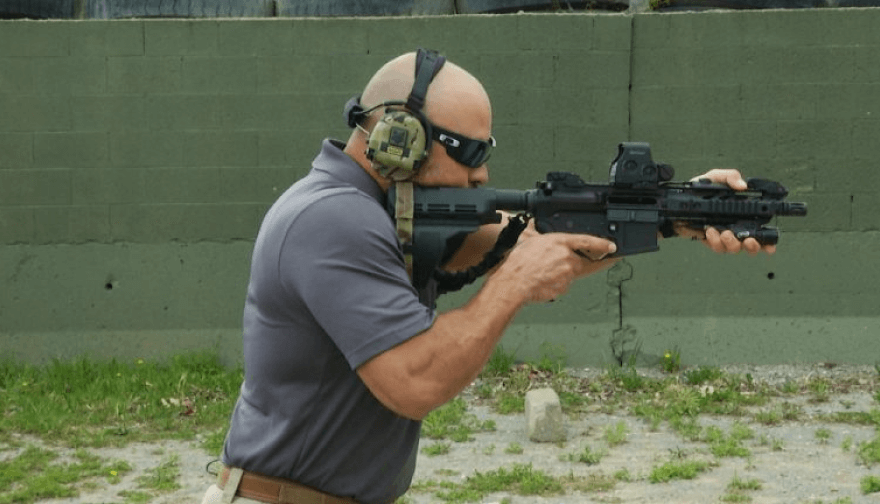
ATF Pistol Brace Rule Explained
The initial greenlight from the ATF contributed to pistol braces skyrocketing in popularity. But in the following years, further inconsistencies in ATF guidance stoked industry confusion and consumer frustration.
In January 31, 2023 ATF outlined criteria for determining whether a firearm with a stabilizing brace should be classified as a short-barreled rifle (SBR) under the National Firearms Act (NFA) in response to an executive order by President Joe Biden directing the ATF to address pistol braces.
Timeline of the ATF Pistol Brace Regulations
2012:
- The SB Tactical SB15 Stabilizing Brace was introduced. It resembled a shoulder stock but was marketed as an accessory for AR-15 pistols.
- The ATF issued a letter stating that using the brace did not alter the classification of the firearm.
2015:
- Following the letter of 2012 the ATF released an open letter clarifying that shouldering the brace did not constitute “redesigning” the firearm.
- This letter provided guidance to manufacturers and users regarding the use of stabilizing braces.
2017:
- The ATF revisited its stance on stabilizing braces.
- A new open letter stated that “incidental, sporadic, or situational” shouldering of the brace did not change the firearm’s classification.
2019:
- The ATF proposed a rule change that would require registration of firearms with stabilizing braces under the NFA.
- Public comments flood in, expressing concerns about the impact on law-abiding gun owners.
2020:
- The ATF withdrew the proposed rule change.
- However, they announced the development of objective criteria to evaluate whether a firearm with a brace should be classified as an SBR.
2021:
- The ATF published the Factoring Criteria for Firearms with Attached “Stabilizing Braces”.
- The criteria included factors like length, weight, caliber, sights, and more.
2023:
- ATF outlined the final rule on Factoring Criteria for Firearms with Attached “Stabilizing Braces” effective immediately.
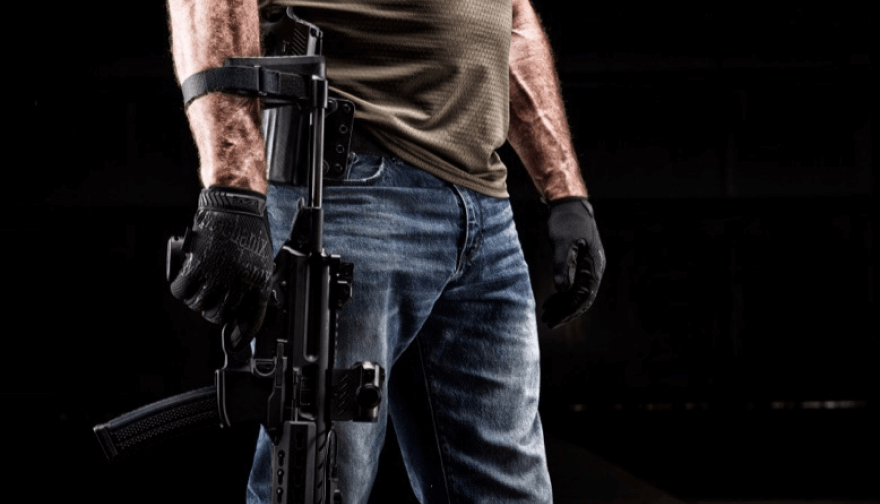
When a Braced Pistol Becomes a SBR?
The entire situation depends on the revised definition of “rifle.” In light of this, the ATF will take into account five main factors when determining whether a braced pistol meets the criteria for a SBR.
- Length and weight: It will compare the weight and length of the braced pistol to a similarly designed SBR.
- Trigger position: This will evaluate the proximity of the trigger to the center of the extended firearm, including all accessories, (similar to a rifle), or whether the trigger is positioned near the rear of the gun (similar to a traditional pistol).
- Optic design: Examining how the sights or scope are designed for use, specifically if they are intended to be raised to the shoulder for effective use.
- Manufacturer’s marketing: Reviews how the manufacturer promotes the firearm along with its intended uses.
- Common use: Takes a look at how the firearm is actually being used within the gun community.
Options for Gun Owners:
The ATF set a deadline of May 31, 2023, for owners of firearms with stabilizing braces to comply with the new rules. Gun owners encountered several options when dealing with the new regulations:
- Registering with the ATF: Under the NFA regulations, gun owners could register their firearm with the ATF. This process involved providing pictures, fingerprints, and passport photos.
- Barrel replacement: Another choice was to replace the firearm’s barrel with one over 16 inches. By doing so, the firearm would fall under the regulations of the Gun Control Act of 1968 (GCA) as a rifle.
- Removing the brace: Some gun owners opted to remove the brace altogether, rendering it non-reusable. Essentially, this action destroyed the brace.
- Turning the fFirearm over to the ATF: Lastly, gun owners could surrender the firearm to the ATF.
Failure to adhere to the new regulations means that individuals in possession of a pistol brace could be subject to severe penalties, such as imprisonment and substantial fines.
Pistol Brace Rule Update: Recent Stay
In response to the ATF’s new rule, a lawsuit was brought against them, leading to a court case in Amarillo, Texas. The injunction issued by the US District Judge has halted the ATF from enforcing the pistol brace rule, providing temporary relief for individuals affected by the regulation.
Currently, pistol braces are considered legal, despite the new ruling, meaning that braced pistols are not regarded as SBRs.
It is anticipated that the court will issue a permanent injunction at a later date. Subsequently, the ATF will appeal the order to the Fifth Circuit, who is likely to uphold the permanent injunction. Consequently, a showdown at the Supreme Court is inevitable, and it is predicted that this will occur at some point during the 2025-2026 term.
However, as legal developments may continue for years, gun owners and enthusiasts should stay informed about any further changes or challenges to the rules.
Pistol Brace Alternatives
The ATF’s shifting stance has created uncertainty around the legality and use of pistol braces. Here are a few alternatives to consider with their pros, and cons:
Maxim Defense Pistol Brace System
Pros:
- Compact and lightweight design ideal for concealed carry or transport.
- Buffer tube format brace provides tensioning against the forearm for added stability.
- Leverages ATF pistol brace guidance for legal clarity.
Cons:
- Lacks ability to firmly shoulder brace against body, reducing accuracy.
- Cheek Weld not optimized as with rifle stocks.
Thordsen Cheek Rest
Pros:
- Provides stable cheek weld for improved pistol shooting accuracy.
- Compatible with standard AR-15 grips and hardware.
- Reinforced polymer construction avoids NFA classification.
Cons:
- Lacks brace/strap for additional support.
- Somewhat bulbous appearance not appealing to all.
- Limited adjustment range.
Pistol Storage Device (PSD)
Pros:
- Streamlined aesthetics, not obviously a brace/stock.
- Can provide secure storage for essentials.
- May offer cheek weld/hand support surfaces.
Cons:
- Vague status in ATF rules due to storage device designation.
- Functional capabilities can vary greatly by design
Black Collar Arms APS
Pros:
- Innovative 3-position telescoping design for adjustable fit
- Hydraulic buffer mechanism reduces felt recoil forces
- Ambidextrous and tool-less length adjustment
Cons:
- Bulkier profile than more minimal options.
- Relative newcomer to market, limited track record.
Wrap Up
The pistol brace saga has seen many twists and turns. Though originally intended to aid shooters with disabilities, these accessories have become embroiled in legal uncertainty.
For now, the ATF can’t enforce rules on reclassifying braced pistols. Moreover, the court battle will most likely continue. Meaning that, it remains important for firearm owners to keep up with all the legal developments. Additionally, there are alternatives that offer viable and enhanced control.

![The Ultimate Shooting Accessories for Every Weapon [A 2023 Beginners Guide]](https://vault.armsdirectory.com/wp-content/uploads/2023/08/30071223/The-Ultimate-Shooting-Accessories-for-Every-Weapon-A-2023-Beginners-Guide-1024x576.png)
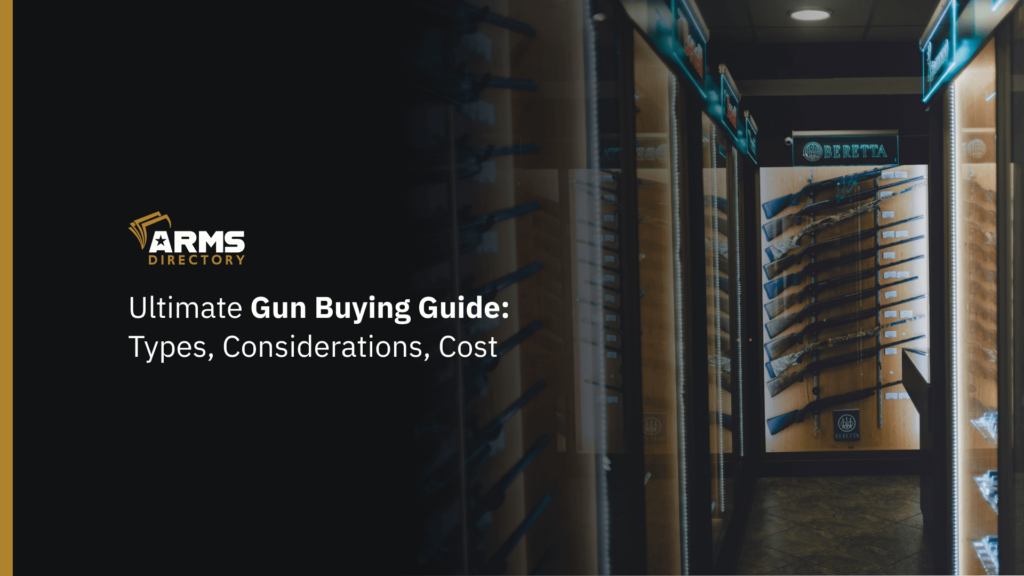
![Gun Registration Requirements by State [What You Need to Know]](https://vault.armsdirectory.com/wp-content/uploads/2023/10/27073220/Gun-Registration-Requirements-by-State-What-You-Need-to-Know-1024x576.png)
![The Right Way to Buy and Sell Firearms Online [Guide]](https://vault.armsdirectory.com/wp-content/uploads/2023/10/20050323/The-Right-Way-to-Buy-and-Sell-Firearms-Online-Guide-1-1024x576.png)
